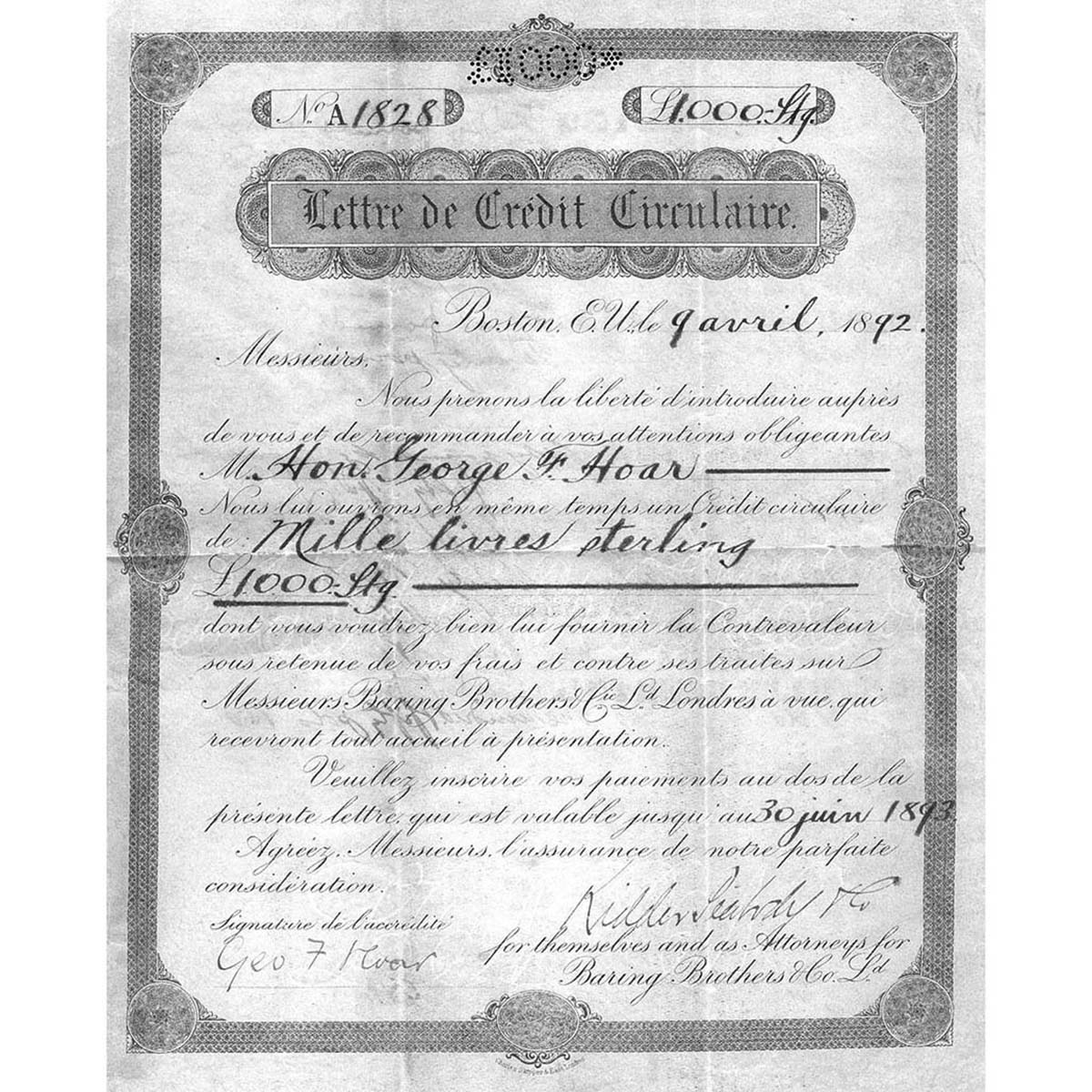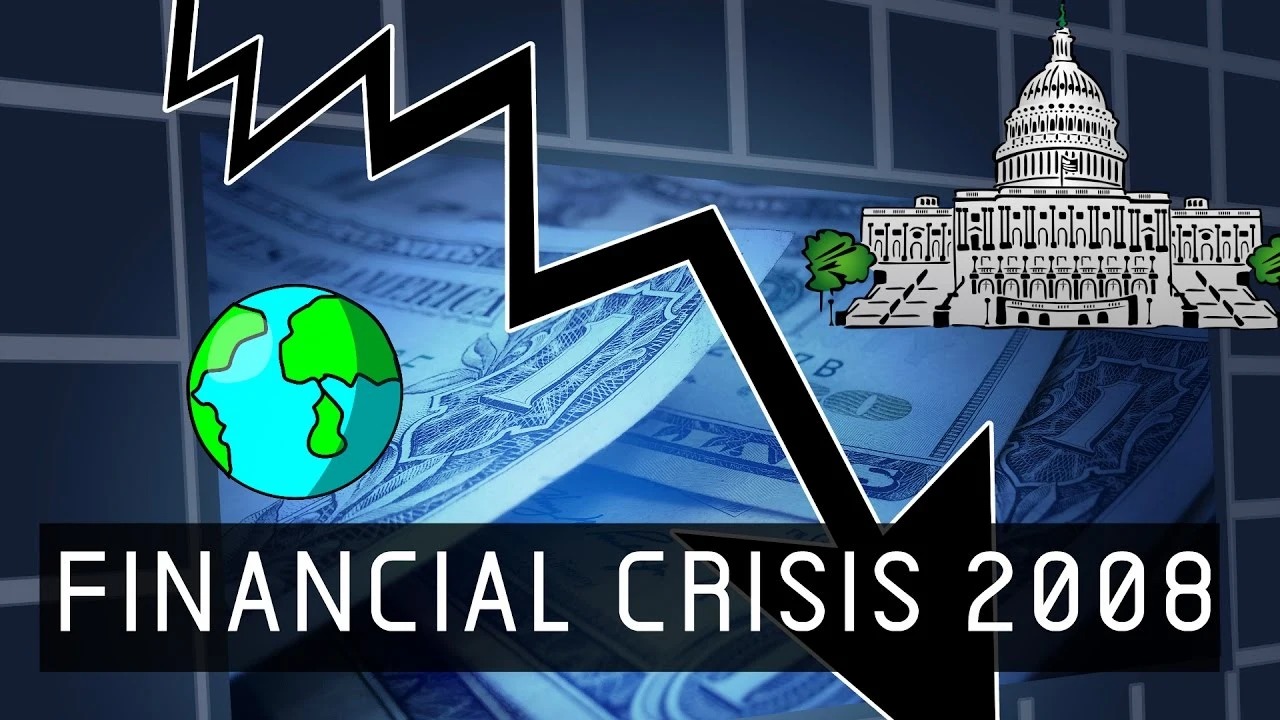

Finance
How To Use A Credit Card For The First Time
Modified: December 30, 2023
Learn how to use a credit card for the first time and manage your finances effectively. Get expert tips and advice on responsible credit card usage.
(Many of the links in this article redirect to a specific reviewed product. Your purchase of these products through affiliate links helps to generate commission for LiveWell, at no extra cost. Learn more)
Table of Contents
- Introduction
- Understanding Credit Cards
- Choosing the Right Credit Card
- Applying for a Credit Card
- Receiving Your Credit Card
- Activating Your Credit Card
- Familiarizing Yourself with the Credit Card Terms and Conditions
- Setting Up Your Credit Card PIN
- Making Your First Credit Card Purchase
- Tracking Your Credit Card Expenses
- Paying off Your Credit Card Balance
- Building Credit with Your Credit Card
- Protecting Your Credit Card Information
- Avoiding Credit Card Pitfalls
- Conclusion
Introduction
Are you ready to take the plunge and use a credit card for the first time? Congratulations! Using a credit card can be a convenient and efficient way to manage your finances and build a credit history. However, it’s important to use your credit card responsibly and understand how it works to avoid any potential pitfalls.
In this article, we will guide you through the process of using a credit card for the first time. From understanding credit cards and choosing the right one for you, to applying, receiving, and activating your card, we will cover all the necessary steps to get you started. We will also discuss important aspects such as credit card terms and conditions, setting up your PIN, making your first purchase, tracking your expenses, paying off your balance, building credit, and protecting your credit card information.
Using a credit card may seem overwhelming at first, but with the right knowledge and guidance, you’ll be able to navigate the world of credit cards confidently and responsibly.
So, let’s dive in and learn how to use a credit card for the first time!
Understanding Credit Cards
Before you start using a credit card, it’s important to have a clear understanding of what exactly a credit card is and how it works. A credit card is a plastic card issued by a financial institution that allows you to borrow money to make purchases. Unlike a debit card, which draws funds directly from your bank account, a credit card allows you to borrow money with the expectation that you will pay it back at a later date.
Every credit card comes with a credit limit, which is the maximum amount of money you can borrow at any given time. This credit limit is determined by the credit card issuer and is based on several factors such as your credit history, income, and creditworthiness.
Using a credit card involves two key concepts: making purchases and incurring debt. When you use your credit card to make a purchase, the amount is added to your credit card balance. This balance needs to be repaid either in full by the due date or in monthly installments, depending on the terms and conditions of your credit card.
It’s important to understand that if you do not pay off your credit card balance in full, you will be charged interest on the remaining balance. Credit card interest rates can vary, so it’s essential to check the interest rate and understand how it will affect your overall debt.
In addition to interest charges, credit cards may also come with fees such as an annual fee, late payment fees, or foreign transaction fees. Make sure to review and understand all the fees associated with your credit card to avoid any surprises.
Lastly, it’s crucial to remember that using a credit card responsibly can help you build a good credit history, which is vital for future financial endeavors such as applying for loans or mortgages. On the flip side, irresponsible use of credit cards can lead to debt accumulation and damage your credit score.
By understanding the fundamentals of credit cards, you are better equipped to manage your finances and make informed decisions when it comes to using your credit card.
Choosing the Right Credit Card
With so many credit card options available, it’s important to choose the right one that suits your needs and financial situation. Here are some factors to consider when selecting a credit card:
- Rewards and Benefits: Credit cards often come with various rewards and benefits, such as cash back, travel rewards, or discounts on specific purchases. Consider the type of rewards and benefits that align with your spending habits and interests.
- Annual Fee: Some credit cards may have an annual fee, while others may not. Assess whether the benefits provided by the card outweigh the annual fee and if you are comfortable paying it.
- Interest Rate: Check the interest rate (APR) offered by the credit card. If you plan to carry a balance, choose a card with a low-interest rate to minimize interest charges.
- Credit Limit: Consider your financial needs and spending patterns when determining the credit limit that will be sufficient for your requirements.
- Introductory Offers: Some credit cards may offer introductory offers, such as a 0% interest rate for a certain period or bonus rewards. Evaluate these offers and understand the terms and conditions associated with them.
- Customer Service and Support: Look for a credit card issuer that provides excellent customer service and support. This can be vital if you encounter any issues or have questions about your card.
- Additional Fees: Consider any additional fees associated with the credit card, such as balance transfer fees, late payment fees, or foreign transaction fees. Be aware of these fees to avoid any surprises.
Take your time to research and compare different credit card options. Look for credible sources that provide unbiased reviews and comparisons of credit cards. Additionally, check if you prequalify for any credit cards to have an idea of the cards that may be available to you.
Remember, choosing the right credit card is essential to ensure that it aligns with your financial goals and lifestyle. Carefully consider the factors mentioned above to make an informed decision and select a credit card that suits your needs.
Applying for a Credit Card
Once you have determined which credit card is the right fit for you, it’s time to apply for it. Here are the steps to follow when applying for a credit card:
- Gather Required Documents: Before starting the application process, gather the necessary documents. Typically, you will need identification documents such as your passport or driver’s license, proof of income, and proof of address.
- Research Application Requirements: Different credit card issuers may have specific requirements for credit card applicants. Research the specific requirements for the credit card you are interested in to ensure you meet the eligibility criteria.
- Fill Out the Application: Visit the credit card issuer’s website or visit a local branch to access the credit card application. Fill out the application form with accurate and up-to-date information. Pay attention to all fields and provide the required details such as personal information, contact information, employment details, and financial information.
- Read and Understand the Terms and Conditions: Before submitting your application, carefully read and understand the credit card’s terms and conditions. The terms and conditions will outline important information such as interest rates, fees, and the cardholder agreement. Make sure you are comfortable with all the terms before proceeding.
- Submit the Application: Once you have completed the application, review it for accuracy, and submit it to the credit card issuer. Depending on the application method, you may be able to submit the application online, by mail, or in person at a branch.
- Wait for Approval: After submitting your application, the credit card issuer will review your application and determine your eligibility. This process can take several days to a few weeks. In the meantime, avoid applying for other credit cards, as multiple applications within a short period can negatively impact your credit score.
- Receive a Decision: Once the credit card issuer has made a decision regarding your application, you will be notified of the outcome. If your application is approved, you will receive your credit card in the mail or be able to pick it up in person. If your application is declined, the credit card issuer will provide a reason for the denial.
Remember, when applying for a credit card, it’s important to be honest and provide accurate information on your application. Avoid misrepresenting any details, as it can lead to severe consequences and affect your future creditworthiness.
By following these steps and taking the time to complete the application carefully, you increase your chances of securing the credit card you desire.
Receiving Your Credit Card
Congratulations! Your credit card application has been approved, and now it’s time to receive your physical credit card. Here’s what you need to know about receiving your credit card:
- Delivery Method: Depending on the credit card issuer, your credit card will be delivered to you either through regular mail or by a courier service. Check with the credit card issuer to confirm the delivery method and estimated timeframe.
- Wait Time: The time it takes to receive your credit card can vary. In some cases, it may take 7-10 business days, while in other instances, it may arrive within a week or two. Be patient and allow sufficient time for the delivery process.
- Security: To ensure the safety of your credit card, it will be delivered in a sealed envelope. If the envelope appears tampered with or damaged upon arrival, contact the credit card issuer immediately to report the issue.
- Activation Instructions: Inside the envelope, you will find instructions on how to activate your credit card. Follow the provided steps precisely to activate your card before you can start using it.
- Review Card Details: Once you have activated your credit card, take a moment to carefully review the card details, including your name, card number, expiration date, and security code (CVV). Make sure all the information is correct and matches the details you provided during the application process.
- Sign the Back of the Card: Flip your credit card over and locate the designated space for your signature. Sign your name on the back of the card to validate it. This signature acts as a security measure and confirms that the card belongs to you.
- Update Card Information: If you have set up automatic payments or linked your credit card to any online accounts, such as shopping websites or subscription services, remember to update the card information with your new credit card details to ensure uninterrupted service.
It’s essential to keep your credit card in a safe and secure place where it will not be easily lost or stolen. Consider using a cardholder or a designated spot in your wallet to protect your card.
Once you have received and activated your credit card, you’re ready to start using it for your purchases and financial transactions.
Activating Your Credit Card
After receiving your credit card, the next step is to activate it before you can start using it. Credit card activation is a straightforward process that can be done through different methods depending on the credit card issuer. Here’s how to activate your credit card:
- Activation Instructions: Inside the envelope containing your credit card, you will find specific instructions on how to activate it. These instructions may include a dedicated phone number, an activation website, or the option to activate through the credit card issuer’s mobile app.
- Phone Activation: If phone activation is provided, you will need to call the designated phone number from the phone number you provided during the application process. Follow the automated prompts or speak with a customer service representative to complete the activation process.
- Online Activation: If online activation is available, visit the activation website provided in the instructions. You may need to create an online account or log in to an existing account associated with the credit card issuer. Follow the steps on the website to activate your credit card.
- Mobile App Activation: Some credit card issuers offer the convenience of activating your credit card through their mobile app. Download the app from your app store, sign in to your account, and follow the activation instructions within the app.
- Verification Information: During the activation process, you may be asked to provide some verification information. This typically includes personal details such as your full name, date of birth, social security number, and the last four digits of your credit card number. Have this information readily available when activating your card.
- Confirmation: Once you have completed the activation process, you will receive confirmation that your credit card is now active and ready for use. Take note of the activation date, as it may be needed for future reference or to verify any applicable introductory offers.
It’s important to activate your credit card promptly upon receiving it to ensure that you can start using it for your purchases. If you’re unsure about any aspect of the activation process, reach out to the credit card issuer’s customer service for assistance.
Once your credit card is activated, you’re ready to enjoy the benefits and convenience that come with using a credit card for your transactions.
Familiarizing Yourself with the Credit Card Terms and Conditions
Before you start using your newly activated credit card, it’s crucial to familiarize yourself with the terms and conditions associated with it. The terms and conditions outline important information about your credit card, including your rights and responsibilities as a cardholder. Here’s what you need to know:
- Interest Rates: Understand the interest rates applied to your credit card balance. This includes the annual percentage rate (APR) for purchases, cash advances, and balance transfers. Knowing the interest rates will help you plan your payments and minimize interest charges if you carry a balance.
- Fees: Review the fee structure of your credit card. This includes annual fees, late payment fees, over-limit fees, cash advance fees, foreign transaction fees, and any other applicable charges. Being aware of the fees will help you avoid unnecessary expenses.
- Grace Period: The grace period is the period between the transaction date and when interest begins to accrue on your purchases. Understand the length of your grace period to effectively manage your payments and avoid paying unnecessary interest.
- Minimum Payment Information: The terms and conditions will specify the minimum payment amount that you must make each month. Failing to make at least the minimum payment can result in late fees and damage to your credit score.
- Rewards Program: If your credit card offers a rewards program, review the details of how it works. Understand how you can earn rewards, the redemption process, and any expiration dates or restrictions associated with the program.
- Credit Limit: Take note of your credit limit, which is the maximum amount you can charge on your credit card. Stay within your credit limit to avoid over-limit fees and potential negative impacts on your credit score.
- Cardholder Agreement: The cardholder agreement is a legally binding document that outlines the terms and conditions of your credit card. Read and understand this agreement to know your rights, responsibilities, and any clauses that may affect your card usage.
- Reporting Lost or Stolen Cards: Be familiar with the process for reporting lost or stolen cards. This will help you take quick action in case your credit card goes missing to minimize any potential fraudulent activity.
It’s essential to read and understand the credit card terms and conditions thoroughly. If you have any questions or uncertainties, contact the credit card issuer’s customer service for clarification. By being aware of the terms and conditions, you can make informed decisions and use your credit card responsibly.
Setting Up Your Credit Card PIN
Once you have familiarized yourself with the terms and conditions of your credit card, the next step is to set up your Personal Identification Number (PIN). A PIN adds an extra layer of security when using your credit card for in-person transactions and cash advances. Here’s how to set up your credit card PIN:
- Choose a Secure PIN: When selecting your PIN, choose a unique and secure combination of numbers. Avoid using easily guessable numbers such as birthdays or sequential numbers. A strong PIN can help protect your credit card information from unauthorized access.
- Visit an ATM: Locate an ATM that is affiliated with your credit card issuer. Insert your credit card into the ATM machine and follow the prompts on the screen.
- Select “PIN Change” Option: Once you have navigated through the ATM prompts, look for the option to change your PIN. It is usually labeled as “PIN Change” or “Manage PIN.”
- Enter Current PIN: In order to change your PIN, you will first need to enter your current PIN. This is a security measure to ensure that only the cardholder can change the PIN.
- Set a New PIN: After entering your current PIN, you will be prompted to enter your new PIN. Carefully choose a new PIN that is easy for you to remember but difficult for others to guess.
- Confirm Your New PIN: Once you have entered your new PIN, you will be asked to confirm it by entering it a second time. This helps to ensure that you have entered the desired PIN correctly.
- Receive Confirmation: Upon successfully changing your PIN, you will receive a confirmation message from the ATM. Take note of your new PIN and store it securely. Memorize it, and never share it with anyone.
If you are unable to set up your credit card PIN at an ATM, you can also contact your credit card issuer’s customer service for assistance. They will provide you with alternative methods to set up your PIN, such as through their website or mobile app.
Remember, your credit card PIN should be kept confidential at all times. Do not write it down or share it with anyone. By setting up a secure and personalized PIN, you enhance the security of your credit card transactions.
Making Your First Credit Card Purchase
Now that you have activated your credit card and set up your PIN, it’s time to make your first credit card purchase. Here’s how to make a successful and responsible transaction:
- Choose Your Purchase: Decide what you want to buy using your credit card. Whether it’s a small item or a larger purchase, make sure it aligns with your budget and financial goals.
- Select a Trusted Merchant: Look for a reputable merchant where you can make your purchase. Ensure that they accept credit card payments.
- Present Your Credit Card: When you are ready to make the purchase, hand over your credit card to the merchant. They will typically swipe or insert the card into their payment terminal.
- Verify the Transaction Amount: Before you enter your PIN or sign for the purchase, confirm that the transaction amount displayed on the payment terminal matches the purchase amount agreed upon.
- Enter Your PIN or Sign the Receipt: Depending on the payment method preferred by the merchant, you may need to enter your PIN or sign a receipt to authorize the transaction. Follow the instructions provided by the merchant.
- Keep the Receipt: Once the purchase is complete, the merchant will provide you with a receipt. Keep this receipt for your records and as proof of purchase in case of any issues or returns.
- Review Your Credit Card Statement: After making your first credit card purchase, it’s important to regularly review your credit card statement. This will allow you to keep track of your expenses, check for any inaccuracies or unauthorized charges, and ensure that you are staying within your budget.
- Plan for Repayment: Remember that the amount you spent on your credit card is not immediately deducted from your bank account. It is essential to plan for repayment of your credit card balance to avoid interest charges. Consider setting up automatic payments or setting reminders to ensure timely payments.
It is essential to use your credit card responsibly and within your means. Make purchases that you can comfortably afford to pay off in full or in monthly installments to avoid accumulating excessive debt and interest charges.
By being mindful and responsible with your first credit card purchase, you can start building a positive credit history while enjoying the convenience and benefits that credit cards offer.
Tracking Your Credit Card Expenses
Tracking your credit card expenses is an important aspect of using your credit card responsibly and managing your finances effectively. By keeping a close eye on your spending, you can stay within your budget, identify any potential issues, and make informed financial decisions. Here’s how you can effectively track your credit card expenses:
- Create a System: Establish a system to track your credit card expenses. This can be as simple as using a notebook or spreadsheet, or you can leverage personal finance apps or online budgeting tools to help automate the process.
- Make Regular Updates: Regularly update your tracking system with the details of each credit card transaction. Include the date, the merchant or company name, the amount spent, and any relevant notes or categorizations you want to add.
- Compare with Receipts: Keep your credit card receipts and match them with the entries in your tracking system. This will help ensure accuracy and provide further documentation for your expenses.
- Categorize Expenses: Categorize your expenses based on your personal preferences. Create categories such as groceries, dining out, entertainment, utilities, or transportation. This will allow you to analyze where your money is going and identify any areas where you may need to adjust your spending.
- Set Spending Limits: Use your tracking system to set spending limits for different categories. This helps you stay within your budget and prevents overspending in any specific area.
- Review Regularly: Take the time to review your credit card expenses on a regular basis. This can be done weekly or monthly depending on your preference. Reviewing your expenses will help you identify any trends, spot any unauthorized charges, and evaluate your overall financial health.
- Utilize Alerts and Notifications: Many credit card issuers offer the option to set up alerts or notifications for each transaction. Take advantage of these features to receive immediate updates when a transaction is made. This can help you stay on top of your expenses and detect any fraudulent activity promptly.
- Set Budgeting Goals: Use your credit card expenses tracking to set financial goals and create a budgeting plan. Analyze your spending patterns and identify areas where you can cut back or save more. Adjust your budget accordingly to align with your financial goals.
By diligently tracking your credit card expenses, you gain a better understanding of your spending habits and can make more informed financial decisions. It also helps you stay in control of your finances and encourages responsible credit card usage.
Remember, the key to effective expense tracking is consistency and discipline. Make it a habit to enter your credit card expenses regularly, and always stay aware of your financial situation.
Paying off Your Credit Card Balance
One of the most important aspects of using a credit card responsibly is paying off your credit card balance. Paying your balance on time and in full can help you avoid interest charges and maintain a healthy financial standing. Here’s what you need to know about paying off your credit card balance:
- Understand Your Billing Cycle: Familiarize yourself with your credit card’s billing cycle. This is the period of time between one statement closing date and the next. Knowing your billing cycle will help you plan your payments accordingly.
- Review Your Statement: When your credit card statement arrives, carefully review it to understand your current balance, minimum payment due, and due date. This allows you to have a clear picture of your financial obligations.
- Pay On Time: Make it a priority to pay at least the minimum payment by the due date. Paying late can result in late fees and negatively impact your credit score. Set up reminders or automatic payments to ensure you never miss a payment.
- Pay in Full (If Possible): While paying the minimum payment is the minimum requirement, it’s advisable to pay off your balance in full each month to avoid carrying over debt and accruing interest charges. This also helps you maintain a good credit utilization ratio, which is important for your credit score.
- Create a Repayment Plan: If you have a balance that cannot be paid off in full, create a repayment plan. Allocate a certain amount each month towards paying down your credit card debt until it is fully repaid. Be consistent with your payments to reduce the balance as quickly as possible.
- Avoid Cash Advances: Cash advances on your credit card usually come with high-interest rates and fees. It’s best to avoid using your credit card for cash advances unless it is absolutely necessary.
- Monitor Interest Charges: If you carry a balance on your credit card, be aware of the interest rate and the interest charges calculated on your outstanding balance. This can significantly impact the total amount you owe if not managed carefully.
- Consider Balance Transfers: If you have a high-interest rate on your credit card balance, you may consider transferring the balance to a card with a lower interest rate. This can help reduce the overall amount of interest you pay and accelerate your debt repayment.
Paying off your credit card balance on time and in full not only saves you money on interest but also helps you maintain a healthy financial position. It’s a good practice to regularly review your payment history, balances, and interest charges, ensuring that you are on track to become debt-free.
Remember, responsible credit card usage includes taking control of your debt by making consistent payments and keeping your balance manageable.
Building Credit with Your Credit Card
One of the significant benefits of using a credit card is its potential to help you build a positive credit history and improve your credit score. Building good credit is essential as it can affect your ability to secure loans, obtain favorable interest rates, and even qualify for certain rental applications or job opportunities. Here’s how you can build credit using your credit card:
- Make Timely Payments: Pay your credit card bill on time each month. Payment history is one of the most critical factors in determining your credit score. Consistently paying your bills by the due date shows lenders that you are responsible and can be trusted with credit.
- Pay in Full or Keep Low Balances: Whenever possible, pay off your credit card balance in full each month to avoid interest charges. If you cannot pay in full, strive to keep your balances low in relation to your credit limit. This demonstrates that you are using credit responsibly and not relying heavily on borrowed funds.
- Monitor Credit Utilization: Your credit utilization ratio is the percentage of your credit limit that you are currently using. Aim to keep your credit utilization below 30% to maintain a positive impact on your credit score. For example, if your credit limit is $1,000, try not to carry a balance exceeding $300.
- Establish a Long Credit History: The length of your credit history matters. The longer you have a credit card and demonstrate responsible credit behavior, the more positive impact it can have on your credit score. Avoid closing old credit card accounts unless necessary, as it could reduce the length of your credit history.
- Diversify Your Credit Mix: Having a mix of different types of credit accounts, such as credit cards, loans, and mortgages, can positively impact your credit score. However, don’t apply for multiple credit cards or loans simultaneously, as it can negatively impact your credit score.
- Regularly Check Your Credit Report: Obtain a copy of your credit report from the major credit bureaus – Experian, TransUnion, and Equifax – and review it for accuracy. Dispute any errors or discrepancies promptly. Regularly monitoring your credit report allows you to identify and correct any issues that may impact your credit history.
- Become an Authorized User: If you have a trusted family member or friend who has good credit, consider becoming an authorized user on one of their credit cards. As an authorized user, their positive credit history can be reported on your credit report, helping you establish or improve your credit.
- Use Credit Responsibly: Maintain the discipline to use your credit card responsibly. Avoid overspending, only charge what you can afford to pay off, and keep track of your spending habits. Building credit takes time and consistency, so remain patient and avoid any negative credit behavior.
Building credit with your credit card requires disciplined and responsible credit management. By making timely payments, keeping your balances low, and being mindful of your credit utilization, you can establish a strong credit history that opens doors to future financial opportunities.
Remember, building credit takes time, so continue practicing good credit habits and monitor your progress as you work towards achieving a positive credit profile.
Protecting Your Credit Card Information
Protecting your credit card information is crucial in today’s digital world to prevent unauthorized access and potential fraud. Safeguarding your card details helps maintain the security of your financial transactions and protects your identity. Here are some essential steps to protect your credit card information:
- Keep Your Card Safe: Treat your credit card as you would treat cash. Keep it in a secure location, such as a wallet or a cardholder, and avoid leaving it unattended or easily accessible to others.
- Memorize Your PIN: Memorize your credit card PIN and never write it down or share it with anyone. Avoid using familiar numbers like birthdays or easy-to-guess combinations to protect against unauthorized access.
- Be Wary of Card Skimmers: When using your card at ATMs or card readers, be vigilant for any suspicious or abnormal devices. Card skimmers can capture your card information, so look for any loose, out-of-place, or tampered card readers and report them to the respective authorities.
- Secure Online Transactions: When making online purchases, ensure that you are using secure websites. Look for HTTPS in the website URL, which indicates a secure connection. Avoid sharing your credit card information on unsecured or suspicious websites.
- Verify Authorized Websites: Be cautious of phishing attempts where scammers try to trick you into entering your credit card information on fake websites. Always double-check the web address and ensure you are on the official website of the retailer or service provider.
- Monitor Your Statements: Regularly review your credit card statements for any unauthorized transactions. If you notice any suspicious or unfamiliar charges, report them to your credit card issuer immediately.
- Protect Personal Information: Be cautious when sharing personal information related to your credit card. Avoid sharing details over insecure channels like public Wi-Fi or unencrypted communication channels, and never provide sensitive information in response to unsolicited requests.
- Use Secure Networks: When accessing your credit card information or making online purchases, use secure and trusted networks. Avoid entering your card details on public or unsecured Wi-Fi networks, as they can be easily intercepted by hackers.
- Update Security Software: Ensure that the devices you use for online transactions have updated security software, including antivirus and anti-malware protection. Regularly install updates to protect against potential vulnerabilities.
- Notify the Issuer: If your credit card is lost, stolen, or compromised in any way, contact your credit card issuer immediately. They can take necessary steps to secure your account and issue you a new card.
By following these practices, you can significantly reduce the risk of credit card fraud and protect your financial information. Remember, staying proactive and vigilant is key to safeguarding your credit card information and maintaining the security of your financial transactions.
Avoiding Credit Card Pitfalls
While credit cards can be a valuable financial tool, it’s important to be aware of potential pitfalls that can lead to unnecessary debt and financial distress. By understanding these pitfalls, you can take proactive steps to avoid them. Here are some common credit card pitfalls to watch out for:
- Overspending: One of the biggest pitfalls is falling into the habit of overspending with your credit card. Avoid the temptation to make impulsive purchases beyond your means and budget. Stick to a spending plan and only charge what you can comfortably afford to pay off in full.
- Carrying a High Balance: Carrying a high balance on your credit card can lead to significant interest charges and a never-ending cycle of debt. Strive to pay off your balance in full each month to avoid incurring interest expenses. If you can’t pay in full, at least make more than the minimum payment to reduce your debt faster.
- Missing Payment Deadlines: Late payments not only incur fees but also damage your credit score. Make it a priority to pay your credit card bill on time each month. Set up reminders or automatic payments to ensure you never miss a payment deadline.
- Ignoring Credit Card Statements: Failing to review your credit card statements regularly can lead to missed errors or fraudulent charges. Take the time to carefully review each statement for accuracy and report any discrepancies or unauthorized transactions to your credit card issuer immediately.
- Misunderstanding Introductory Offers: Many credit cards offer attractive introductory offers such as 0% APR or bonus rewards. However, it’s crucial to understand the terms and conditions associated with these offers. Be aware of any time limits, fees, or requirements to qualify for these promotions to avoid any surprises.
- Focusing Solely on Minimum Payments: Paying only the minimum payment due each month may seem convenient, but it can trap you in a cycle of debt. Minimum payments often cover mostly interest charges, resulting in a slow repayment of the principal balance. Strive to pay more than the minimum required to make a substantial impact on reducing your debt.
- Maxing Out Your Credit Limit: Maxing out your credit card can negatively impact your credit score and make it difficult for you to access additional credit in the future. Aim to keep your credit utilization ratio below 30% by managing your spending and staying well below your credit limit.
- Opening Too Many Credit Cards: While having different types of credit can be beneficial, opening multiple credit cards within a short period can raise red flags for lenders and potentially harm your credit score. Carefully evaluate your needs and choose credit cards wisely to avoid overextending your credit.
- Ignoring Changes in Terms and Conditions: Credit card issuers may make changes to interest rates, fees, or terms and conditions. Stay informed by reviewing communications from your credit card issuer and regularly reading updates to avoid any surprises that could impact your finances.
Avoiding these credit card pitfalls requires discipline and active financial management. Be mindful of your spending, stay informed about your credit card’s terms, and prioritize responsible credit card use. By avoiding these pitfalls, you can leverage the benefits of credit cards while maintaining financial stability and peace of mind.
Conclusion
Congratulations! You have now gained valuable knowledge on how to navigate the world of credit cards and use them responsibly. Armed with this information, you can confidently manage your finances, build credit, and make informed financial decisions. Here are some key takeaways to remember:
Understanding credit cards is essential. Familiarize yourself with the terms and conditions, interest rates, fees, and other important aspects of your credit card to ensure responsible usage.
Choose the right credit card for your needs. Consider the rewards, fees, interest rates, and credit limit that align with your financial goals and spending habits.
Filling out the credit card application accurately and providing all required documentation is crucial for a smooth approval process.
Activate your credit card and set up your PIN promptly and securely to protect your card and prevent unauthorized use.
Track your credit card expenses diligently to stay within your budget, review your spending patterns, and detect any potential issues or discrepancies.
Pay off your credit card balance on time and in full whenever possible to avoid unnecessary interest charges and maintain a healthy credit score.
Building credit is a gradual process. Use your credit card responsibly, make timely payments, and keep your credit utilization low to establish a positive credit history.
Protect your credit card information by practicing safe online transactions, monitoring your statements, and being cautious about sharing personal information.
Avoid common credit card pitfalls such as overspending, carrying high balances, missing payments, and misunderstanding introductory offers. Stay disciplined and informed to manage your credit card effectively.
By incorporating these practices into your financial routine, you can maximize the benefits of credit cards while avoiding potential pitfalls. Remember, responsible credit card usage is a valuable tool for managing your finances, building credit, and achieving your financial goals.
Now that you are well-equipped with the knowledge and tips for using a credit card, go forth and confidently embrace this financial tool to enhance your financial well-being!














